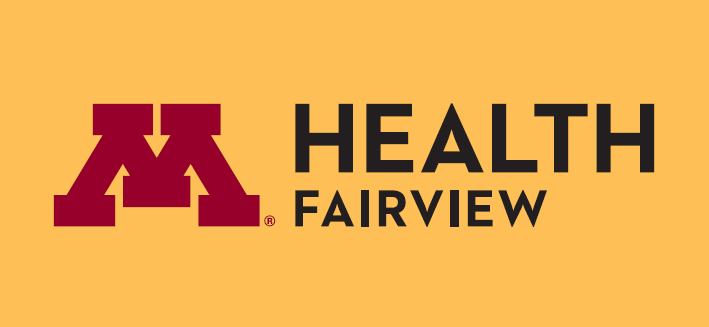The RACI model clearly lays out roles and responsibilities for any activity or group of activities.
Using RACI will identify functional areas when there are process ambiguities, bringing the differences out in the open and resolving them through a cross-functional collaborative effort.
It enables employees to actively participate in a focused and systematic discussion about the actions that must be accomplished in order to deliver a successful end product or service.
RACI is a tool to help us plan who does what and when.
Its purpose is to answer the following questions:
- What activities, milestones and tasks must be carried out and completed?
- Who must do them?
It attempts to share accountability across the organization.
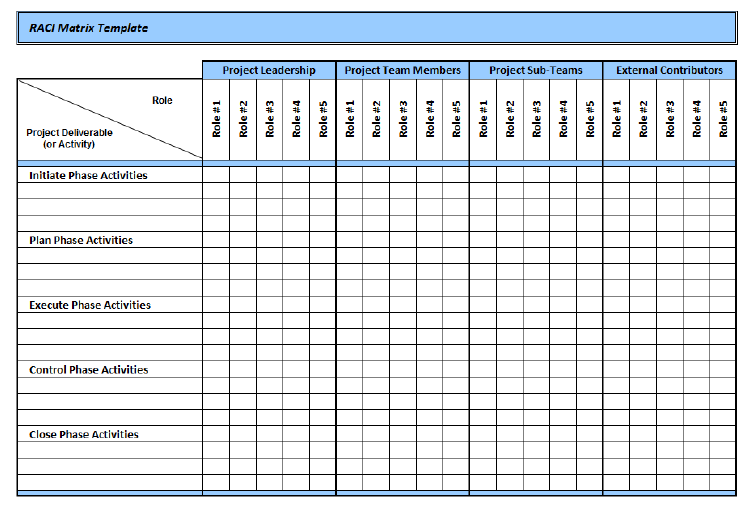
When Should I use the RACI model?
Projects that involve a variety of people and roles.
Example: Rollout of new process throughout the system.
Activity or event that will occur over time and needs to be tracked.
Example: Department rollout of employee engagement initiative
Benefits of Using the RACI Model
- Improved teamwork, collaboration, cooperation and communication.
- Clarity around “who does what” so there is less duplication of effort
- Increased productivity because everyone should be very clear on what they should be doing and what other people are doing
- Efficient use of resources
- Ensuring everyone is involved and workload is distributed evenly and appropriately according to roles/skills
- Improved planning and execution through participation and stakeholder management
R - Responsible
- The role or individual(s) who performs a task, activity or job –the “doer”
- The degree of responsibility is defined by the accountable role or person.
- Responsibilities can be shared when people collaborate to complete (“do”) a process step, task etc.
Does mean:
- Individual(s) are active members of the team
- Will take on ownership of tasks by offering ideas, opinions; will bring expertise to activity/project
Does NOT mean:
- Turning off brain to complete work
- Stalling on task in hopes that it will go away
- Gets to make the final decisions; a disagreement does not mean the project/initiative will stop
A - Accountable
- The role or individual(s) who is ultimately accountable to make sure the activity is completed satisfactorily. For example, “The buck stops here.”
- The accountable role or individual can also be responsible(R) but can choose not to be.
Does mean:
- Individual gets to ‘make the call’ when there is disagreement or lack of consensus –has ‘veto’ power
- Individual is responsible for gathering the appropriate constituencies prior to key decisions and/or other projects are launched
Does NOT mean:
- Making unilateral decisions without collaborating with key stakeholders and customers
- Doing all of the work alone
C - Consulted
- The role or individual(s) to be consulted prior to a final decision or action –“keep in the loop”.
- The role or individual(s) who needs to be consulted as part of completing an activity, process step, tasks, milestones, etc. Their input may be necessary as part of good stakeholder management.
Does mean:
- Input is sought prior to final decisions; two way communication
- Thoughtful discussion is expected
Does NOT mean:
- Consensus: the ‘A’ is not required to agree to the ‘C’ opinion
- ‘C’ is a ‘rubber stamp’ after a final decision is already made
- Buy-in is optional
I - Informed
- The role or individual(s) who needs to be informed after a decision or action has been taken or about a work package, milestone, task or activity –“keep in the picture”
- It involves ONE-WAY communication as the role or individual’s input is not necessary, but they need to know
Does mean:
- Information is shared at appropriate time (as determined by impact of decision, role in the organization, level of confidentiality)
- Impact of decision/information will be thought through as much as possible prior to message delivery
Does NOT mean:
- Decisions are re-opened because of a disagreement
- The ‘I’ is unimportant to the process
Role Clarification

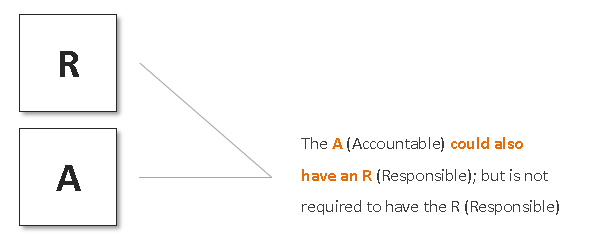


Implementation
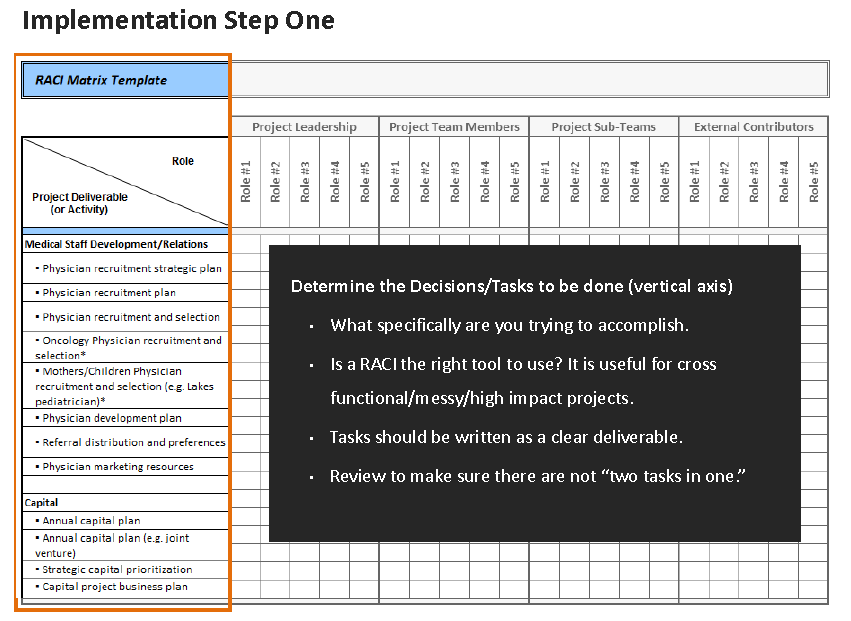
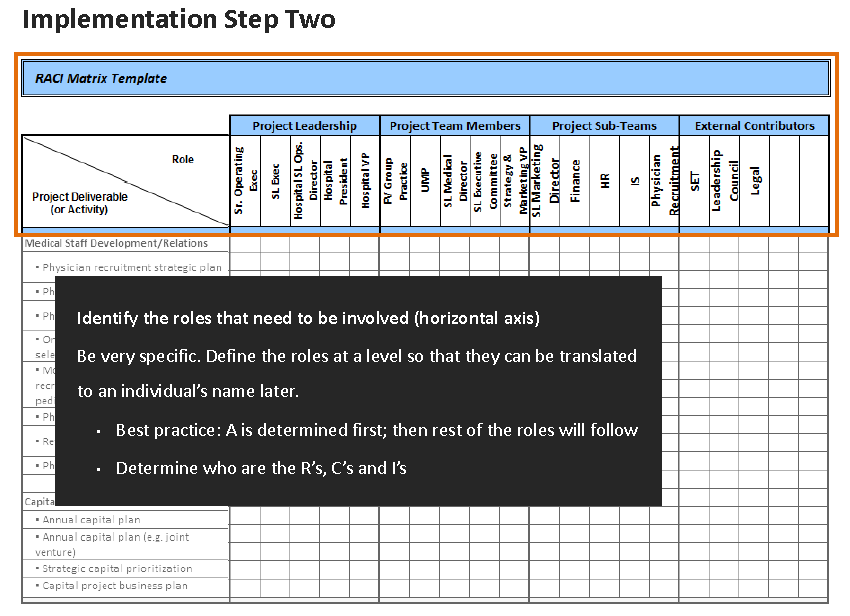

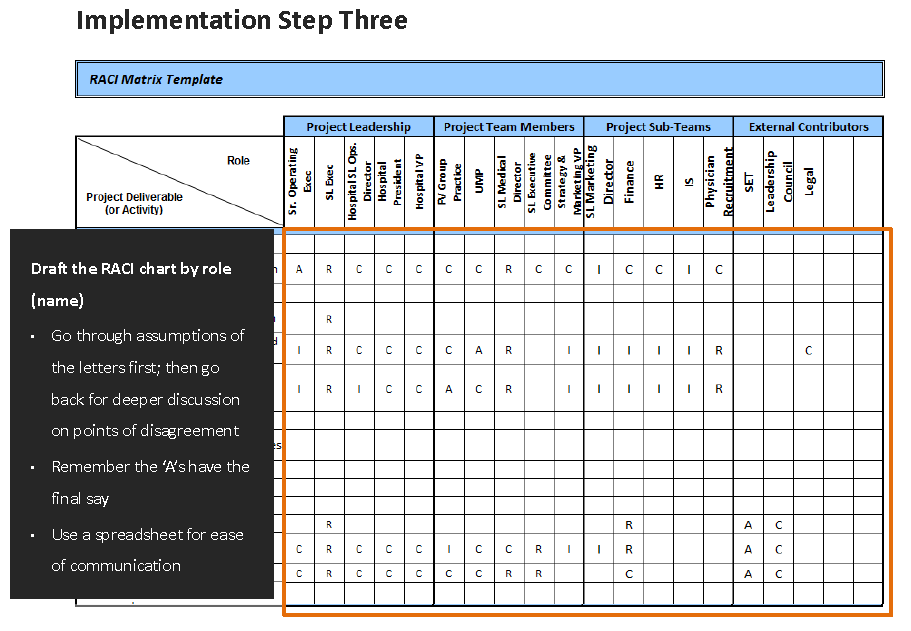

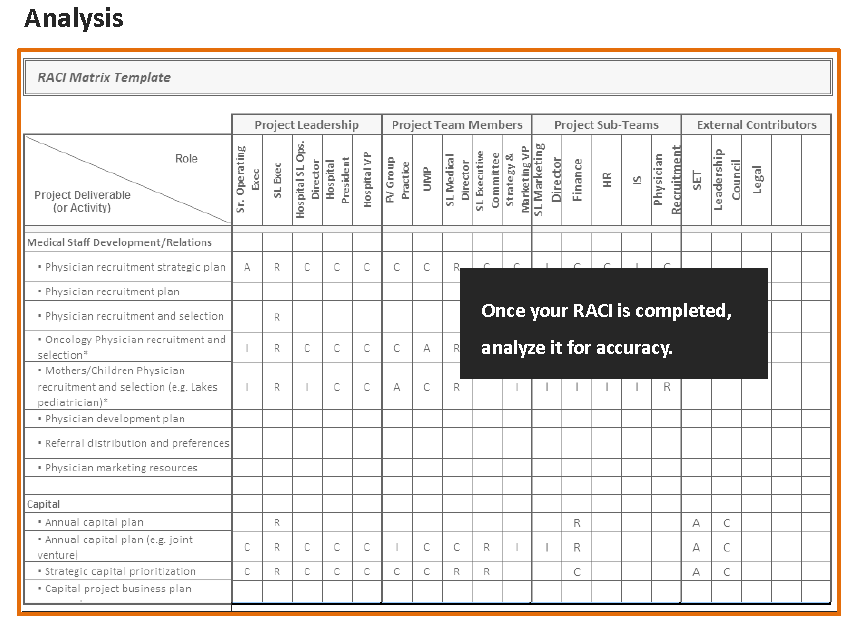
VERTICAL ANALYSIS some possible issues:
Someone has lots of R’s – Looks like someone is overloaded with work. Can you re-allocate the load?
More than one A – Sounds like someone is micro-managing or there is only one decision maker
There are no empty spaces – Could be that someone is micro-managing or is over-involved
There are no As and R’s – What’s this role’s involvement?
HORIZONTAL ANALYSIS some possible issues:
No A – Chances are this is a “I thought you were doing this” situation waiting to happen
More than one A – Not allowed –see Rules
Too many R’s – Maybe there are too many people involved
Too many C’s – Could be a source of delay if everyone has to be consulted. Risky!
There are no R’s – Who’s doing the work?
Implementing RACI
When completed accurately, RACI will allow for easier project tracking. Team members will know who is doing what.
Keeping RACI updated on an on-going basis is imperative for efficiency.
RACI assignments can be changed by agreement at any point and additional tasks can be added as the project changes.
